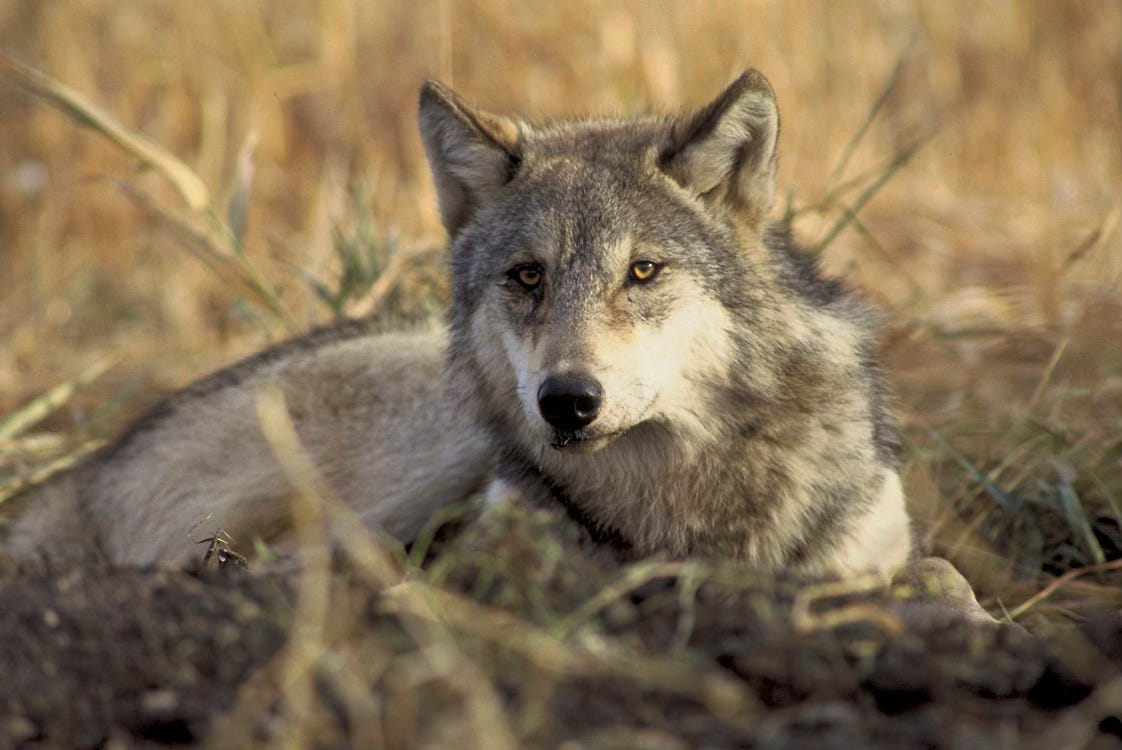Denial Of Gray Wolf Protections Violated Endangered Species Act, Judge Rules
Republican-backed wolf-culling campaigns may wind up triggering federal protections again.

The Fish and Wildlife Service will have to reconsider whether gray wolves in the western United States merit Endangered Species Act protections in light of Republican-backed efforts to aggressively cull the animals in the Northern Rockies, a federal judge ruled Tuesday.
Tuesday’s ruling, penned by U.S. District Judge Donald Molloy, hands a win to wildlife groups that petitioned the FWS in 2021 to reconsider whether state laws that liberalized wolf hunting and trapping in Montana and Idaho threatened gray wolves enough to force the federal government to protect them once again.
The ruling “puts these states on notice,” George Nickas, the executive director of Wilderness Watch, told Public Domain. “Their hatred for wolves is ultimately going to lead to re-listing.”
A spokesperson for FWS said the agency does not comment on pending litigation. The agency may appeal the ruling.
“We’re extremely disappointed with the decision considering Idaho has managed a wolf population above federal recovery goals for decades and sustained more-than-adequate wolf populations since Congress removed them from Endangered Species Act protection in 2011,” Jim Fredericks, the director of Idaho Fish and Game, said in a statement.
“Wolves are polarizing, and some people simply don’t believe wolves should be hunted or trapped at all. Where we have sustainable populations, we believe those decisions should be left to the states, and not dictated by the federal government or the Courts,” he added.
Tuesday’s decision does not change the current status of federal wolf protections in the western United States. Gray wolves remain ESA-protected in much of the west and de-listed in the Northern Rockies region, which includes Idaho, Montana, Wyoming and parts of Oregon and Washington.
But FWS will have to reconsider its decision to deny protections to wolves in the western United States, using wide-ranging technical criteria laid out in the 105-page ruling. The agency must study more closely whether increased wolf killing in Idaho and Montana may eventually push the animals below the thresholds mandated by the original state management plans.
The agency will also have to analyze whether lower wolf numbers in those states might keep far-flung populations from staying connected enough to guarantee genetic diversity. The ruling notes that high levels of wolf mortality in Wyoming, which allows year-round hunting without a license in most of the state, likely limited the animals’ dispersal to neighboring Colorado for more than two decades.
Though Northern Rocky states say they have mechanisms in place to halt wolf hunting and trapping if populations fall too low, Judge Molloy questioned the accuracy of population counts carried out by their wildlife agencies. The judge also faulted FWS for failing to accurately estimate the impact of poaching.
And when assessing whether the species is threatened, the Service will have to consider wolves’ status across their historic range in the western United States, including currently unoccupied areas.
“This is the best news we’ve had in years,” Suzanne Asha Stone, the executive director of the International Wildlife Coexistence Network, wrote in a message to Public Domain. “Idaho is literally the worst place in the world to be a wolf.”
The updated FWS assessment mandated by Judge Molloy would apply to wolves across the western states, doing away with the Northern Rockies “distinct population segment” where wolves are most numerous and controversial.
In 2021, both Idaho and Montana passed laws aimed at reducing wolf numbers by making it easier to hunt and trap wolves. Idaho’s controversial law, championed by ranchers and hunting outfitters frustrated with the animals’ impact on livestock and big game herds, legalized third-party killing for wolves. Both states aimed to manage for lower numbers of wolves, while trying to avoid hitting the threshold of 150 animals, or 15 breeding pairs, that would trigger the feds to take over wolf management.
“Managing for the bare minimum is not the way we should be managing a species that had 50 years of protections,” said Lizzy Pennock, an attorney with WildEarth Guardians. “The rebuke of that sort of management is really well represented in the opinion.”
While the ruling marks a victory for wildlife advocates, the FWS isn’t likely to jump at the chance to protect wolves under the current administration. Trump’s Interior Sec. Doug Burgum has repeatedly derided the ESA, describing it as a “Hotel California,” where “once a species enters, they never leave.”
“It’s my understanding that we’ve far exceeded the recovery numbers,” Burgum told the House Natural Resources Committee in June. “If the gray wolf comes off [the Endangered Species Act], it should be a celebration that we’ve done a great job with recovery.”
The Trump administration’s recently confirmed FWS Director Brian Nesvik previously served as the head of Wyoming Game and Fish. Wyoming is one of the states highlighted in the lawsuit for its liberal hunting and trapping of wolves.
Read the ruling below.
This post was updated Aug. 7 to add a statement from Idaho Fish and Game Director Jim Fredericks.


